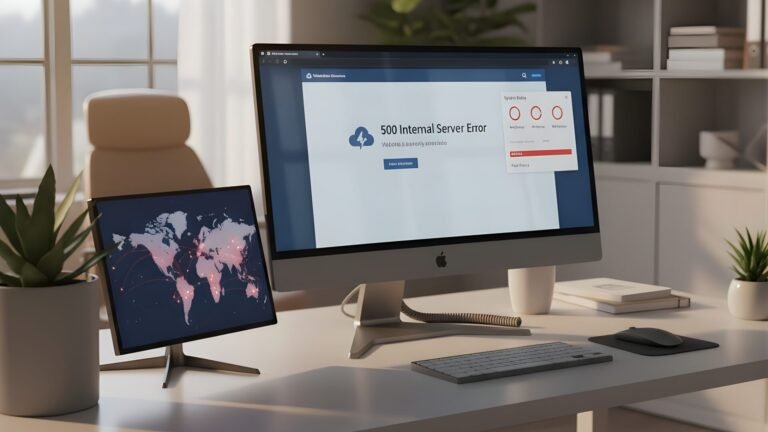Website speed is no longer a secondary metric—it’s a core ranking factor and a critical determinant of user experience. Whether running an e-commerce platform, a corporate site, or a digital portfolio, slow loading times can directly affect bounce rates, conversions, and search visibility. In an age where milliseconds can influence decisions, knowing how to improve website speed efficiently and affordably is vital.
This guide outlines seven free tweaks anyone can implement to enhance performance without investing in premium tools or complex frameworks. Each tip aligns with modern page optimization checklists and includes practical speed test tips to help analyze results effectively.
To start assessing your performance, try the free speed analysis tool from Flutebyte Technologies:
👉 Check your website speed here
1. Optimize Images Without Losing Quality
Large images are one of the most common reasons for sluggish websites. They consume bandwidth and delay page rendering.
Switch to modern formats like WebP or AVIF, which deliver high quality at smaller file sizes compared to traditional JPEG or PNG formats. These formats are supported across most browsers and deliver noticeable improvements in loading time.
b. Compress Intelligently
Tools like TinyPNG, ImageOptim, or Squoosh allow you to compress images without visible quality loss. Automated plugins such as ShortPixel (for WordPress) or Cloudinary (for developers) can handle compression dynamically.
c. Set Proper Dimensions
Always define width and height attributes in your HTML or CSS. This helps browsers allocate space before the image loads, preventing layout shifts—a key factor for Google’s Core Web Vitals.
Implementing image optimization alone can lead to an improvement of up to 30–50% in load speed.
2. Minimize HTTP Requests
Every file (CSS, JS, image, font) a page loads adds an HTTP request. The more requests made, the longer the load time.
a. Combine and Minify Files
Use tools such as Minify, Terser, or UglifyJS to merge and compress scripts or stylesheets. Combining them reduces requests, while minification removes unnecessary spaces and comments.
b. Inline Critical CSS
Critical CSS refers to styles required for the first render. Loading these inline ensures the initial view appears faster, improving perceived performance.
c. Remove Unused Assets
Over time, websites accumulate unused scripts and libraries. Audit your theme or framework regularly and eliminate what’s unnecessary.
Following this approach contributes to a more efficient page optimization checklist, lowering page size and improving time-to-first-byte (TTFB).
3. Use Browser Caching for Returning Visitors
Caching stores certain assets in a visitor’s browser so that they don’t need to be reloaded during subsequent visits.
Set cache control headers via your server configuration (Apache, Nginx, or Cloudflare). For example:
Cache-Control: public, max-age=31536000
This allows static assets like images, scripts, and stylesheets to be reused for up to one year.
b. Implement Service Workers
For progressive web apps (PWAs) or modern sites, Service Workers offer advanced caching strategies and offline support, further optimizing repeat visits.
c. Test Cache Effectiveness
Use the Flutebyte speed test tool or Google’s PageSpeed Insights to verify caching efficiency and asset expiry durations.
Caching not only boosts speed but also reduces server load—a win-win for both performance and scalability.
4. Use a Content Delivery Network (CDN)
A CDN distributes website files across multiple data centers worldwide. When users access your site, files load from the server nearest to them, drastically reducing latency.
a. Choose a Free CDN
Free options like Cloudflare, jsDelivr, and Google Cloud CDN (trial tier) provide robust caching and DDoS protection at zero cost.
b. Cache Static Content Globally
Store static assets such as CSS, JS, and media on the CDN. Dynamic pages can still be served from your origin server while the static elements load instantly.
After integration, compare the before-and-after results using speed test tips like testing from multiple global locations. This helps verify whether CDN caching is effective across regions.
Using a CDN can cut average page load times by 40–60%, especially for international traffic.
5. Optimize Database and Backend Queries
While front-end optimization often gets attention, backend performance plays an equally important role in total load time.
a. Clean and Index Databases
Regularly remove redundant entries, transient data, and revisions (common in CMS platforms like WordPress). Implement proper indexing for frequently queried fields to improve query response time.
b. Use Object Caching
In-memory caching tools like Redis or Memcached store database query results for reuse. This reduces the need for repeated database calls.
c. Limit Plugin Overload
Too many plugins—especially on WordPress—can create unnecessary database queries and slow down execution. Keep only what’s essential.
Database optimization should be part of every page optimization checklist, ensuring that both the visible and invisible parts of your site run efficiently.
6. Enable Lazy Loading for Images and Videos
Lazy loading defers loading of off-screen content until users scroll near it. This dramatically improves the initial page rendering speed.
a. Native Lazy Loading
Modern browsers now support the loading="lazy" attribute. Example:
<img src="hero-banner.jpg" loading="lazy" alt="Website Banner">
This method is lightweight and doesn’t require external JavaScript libraries.
b. Apply to Embedded Videos
Videos can significantly slow down websites. Instead of embedding full YouTube iframes, use preview thumbnails that load the actual video only when clicked.
c. Measure Impact
Run a speed test before and after enabling lazy loading. You’ll likely notice a significant boost in performance scores, especially on mobile devices.
Lazy loading contributes not only to faster perceived performance but also to better energy efficiency—a growing consideration for eco-friendly web practices.
7. Leverage GZIP or Brotli Compression
Before web files reach a browser, they can be compressed by the server to reduce transfer size.
a. Enable GZIP Compression
GZIP is supported by nearly all browsers and servers. It can compress text-based assets (HTML, CSS, JS) by up to 70%. Add the following line to your server configuration:
AddOutputFilterByType DEFLATE text/html text/css application/javascript
b. Use Brotli for Higher Efficiency
Brotli, developed by Google, offers even better compression ratios than GZIP. It’s available on most modern hosting providers and CDNs like Cloudflare.
c. Validate Compression
Use testing tools such as GTmetrix, Lighthouse, or Flutebyte’s Website Speed Checker to confirm compression is active.
Compression ensures data transfers faster across networks, improving both desktop and mobile load times.
Optimization isn’t a one-time process. Periodic audits ensure that updates, plugins, or third-party scripts don’t gradually degrade performance.
Test using multiple tools to get accurate insights:
- Google PageSpeed Insights
- GTmetrix
- Lighthouse
- Flutebyte Speed Checker
b. Track Core Web Vitals
Focus on Largest Contentful Paint (LCP), First Input Delay (FID), and Cumulative Layout Shift (CLS). These metrics directly influence SEO rankings and user satisfaction.
c. Maintain Version Control
When implementing tweaks, keep records of changes. This makes it easier to identify which updates improved or reduced speed over time.
Conclusion
Improving website speed doesn’t necessarily require expensive upgrades or professional-level coding. By following these seven free tweaks, it’s possible to significantly optimize both perceived and actual performance.
Each action—from image compression to caching and database tuning—plays a vital role in building a fast, efficient, and SEO-friendly digital experience. Applying these adjustments consistently ensures that your site not only loads faster but also performs reliably under various traffic conditions.
If you’re looking for expert assistance in implementing advanced optimization techniques or building high-performance websites, Flutebyte Technologies can help.
Flutebyte Technologies specializes in:
- Web Development and Design
- Software and ERP Solutions
- Shopify Development
- SaaS Application Development
- IT Consulting and Automation Services
For professional performance optimization and development services, visit Flutebyte Technologies.
FAQs
1. What is the easiest way to improve website speed for free?
Compressing images and enabling browser caching are the most effective free methods. They deliver instant improvements without technical complexity or additional costs.
2. How do I test my website’s loading time accurately?
Use tools like Flutebyte’s Website Speed Checker, Google PageSpeed Insights, or GTmetrix. Test from multiple locations and devices to get a realistic performance overview.
3. How often should website speed be tested?
It’s ideal to perform tests monthly or after major content updates. Continuous monitoring ensures any slowdown is detected early.
4. Can plugins slow down my website?
Yes. Excessive or poorly coded plugins can add redundant scripts, database queries, and requests. It’s best to keep only essential plugins and monitor performance after each installation.
5. Do website speed improvements affect SEO rankings?
Absolutely. Speed directly influences Core Web Vitals, which are ranking factors for Google. Faster sites experience lower bounce rates, higher engagement, and better organic visibility.
Sources
- Google Developers – Core Web Vitals
- GTmetrix – Website Performance Optimization Guide
- Cloudflare – What is a CDN?
- TinyPNG – Image Optimization Techniques
- Mozilla Developer Network – HTTP Caching Guide




